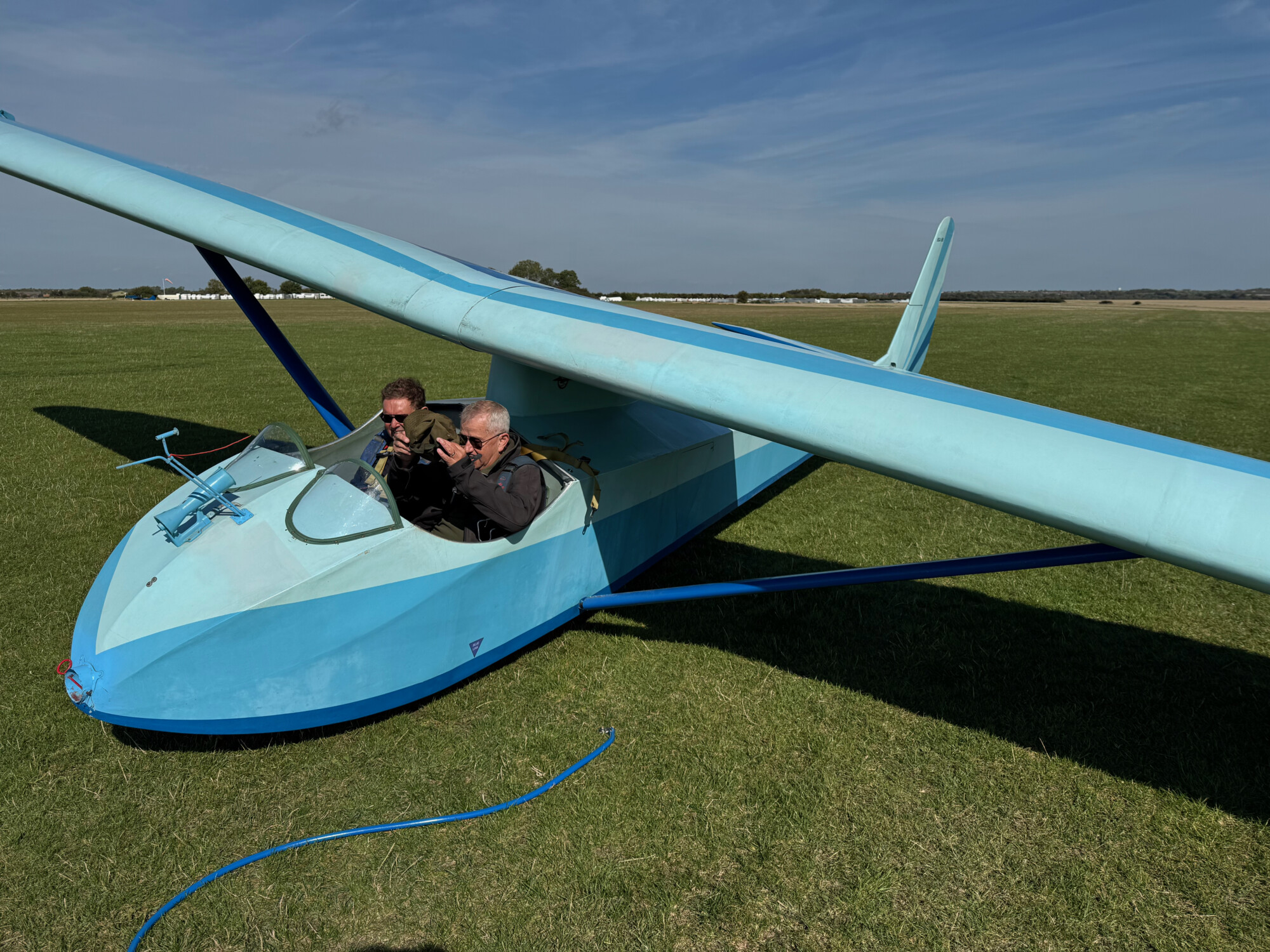Bluebell is even older than me. She’s 75 years old. I have finally had a chance to fly her!
Here are some things that are different.
In modern two-seat gliders, you sit one behind another (typically the instructor behind the student, but not always). In Bluebell, you sit next to one another. This is nice! Although it does mean that you may want to be particular about whether you do left-hand circuits or right-hand, so you can clearly see the runway. (A circuit is the rectangular flight path around the airfield that pilots do before they land).
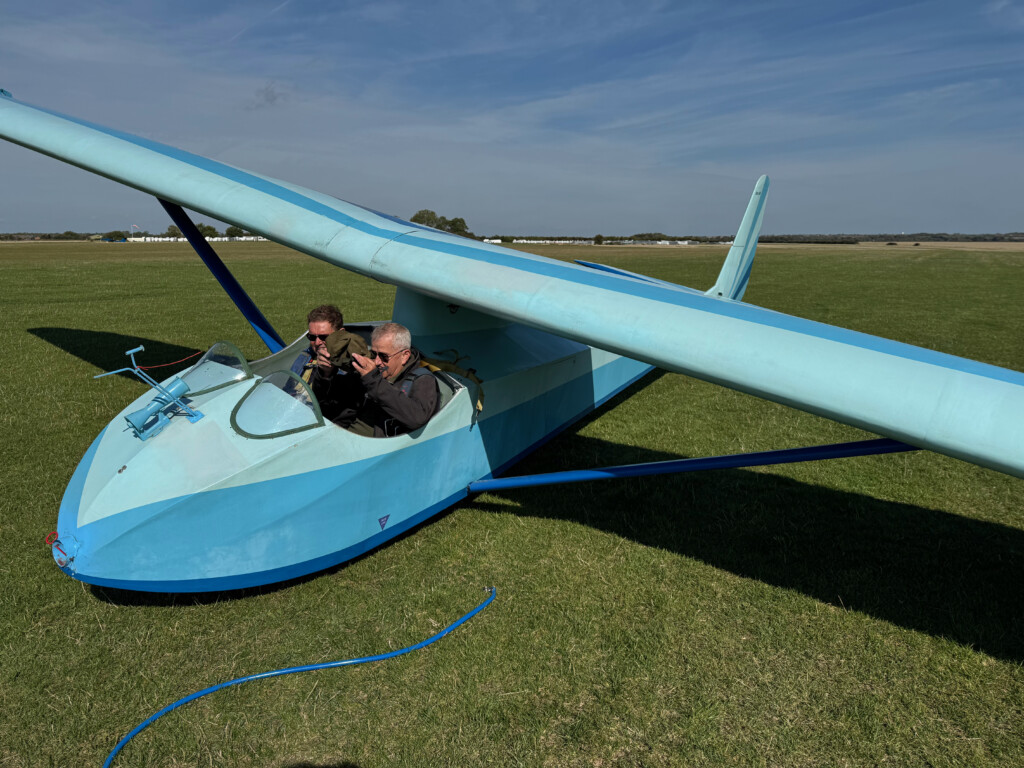
Modern gliders are made of Fancy Composite Materials (FCMs). Bluebell is made from wood and fabric. This becomes particularly apparent when you peek inside her (which is all part of the daily checks).
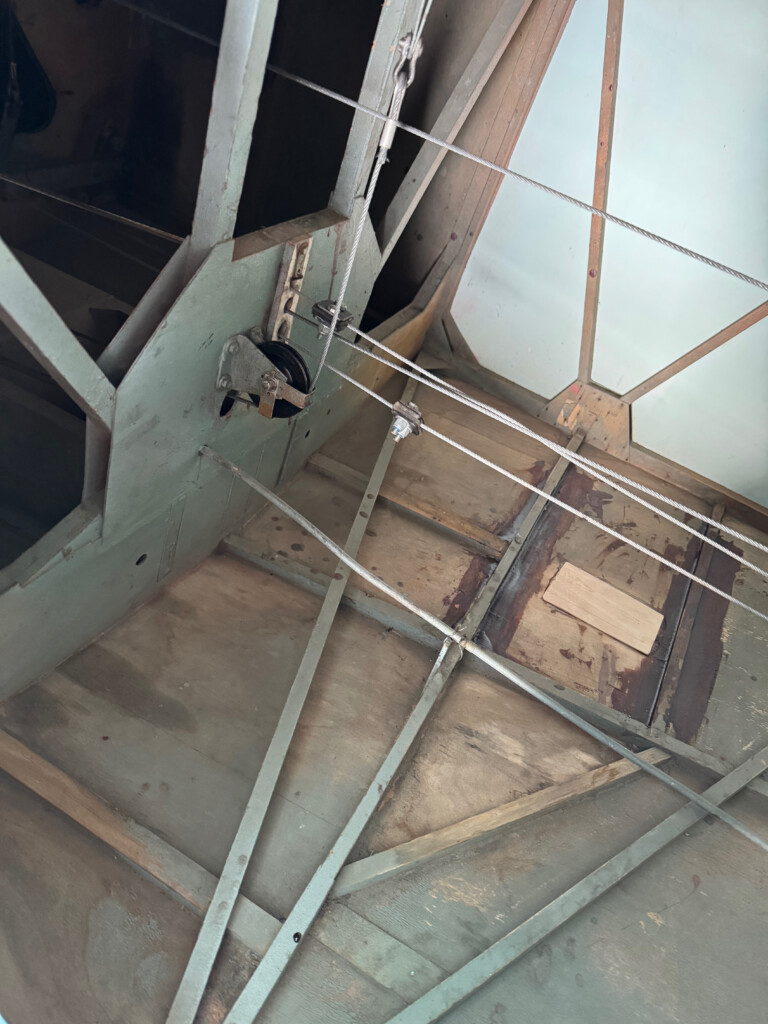
Bluebell has absolutely no electrics. Her instruments are entirely powered by the force of air. Thanks to Steve Gibson who has a portable FLARM and suitable padding for Bluebell’s cubby-hole. (A FLARM is a conspicuity device broadcasting our location to other gliders, and vice-versa).
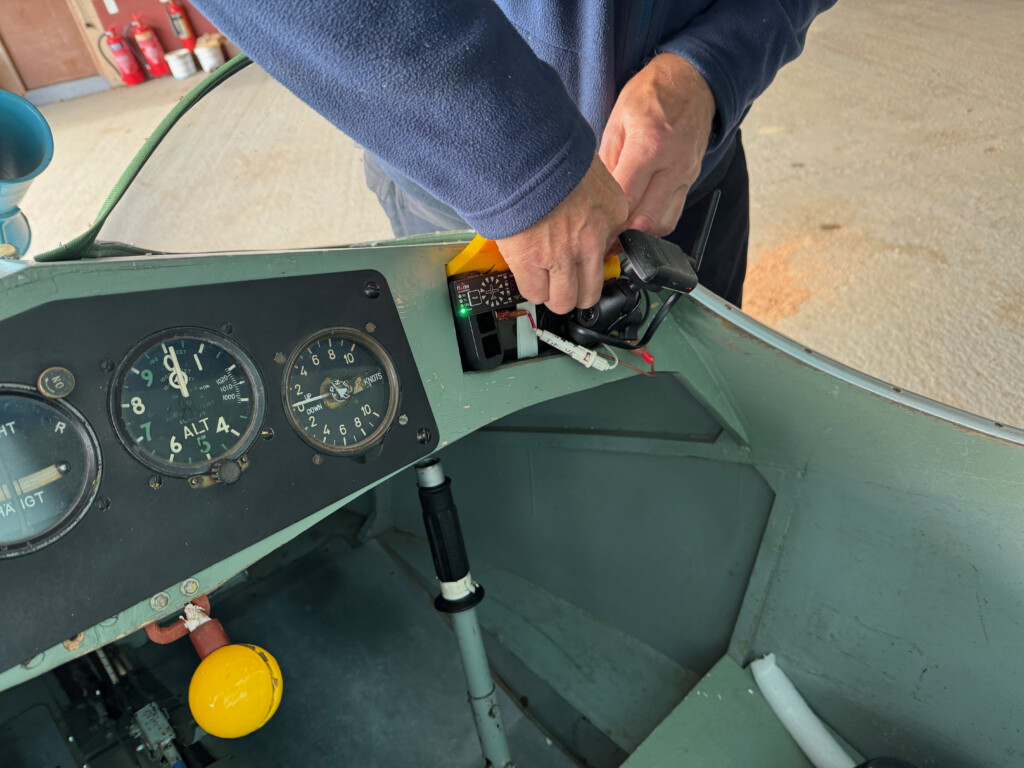
Bluebell flies very slowly. She’s happiest at 32 knots. My instructor Rob explained that one time he actually landed backwards because the headwind was a few knots more than the speed at which he touched the ground.
This slowness gives lots of time to get organized and she’s lovely to fly. That said, a gust of wind (as you naturally get in the vicinity of thermals) can significantly affect the airspeed, so it’s pretty hard to stick to a consistent speed.
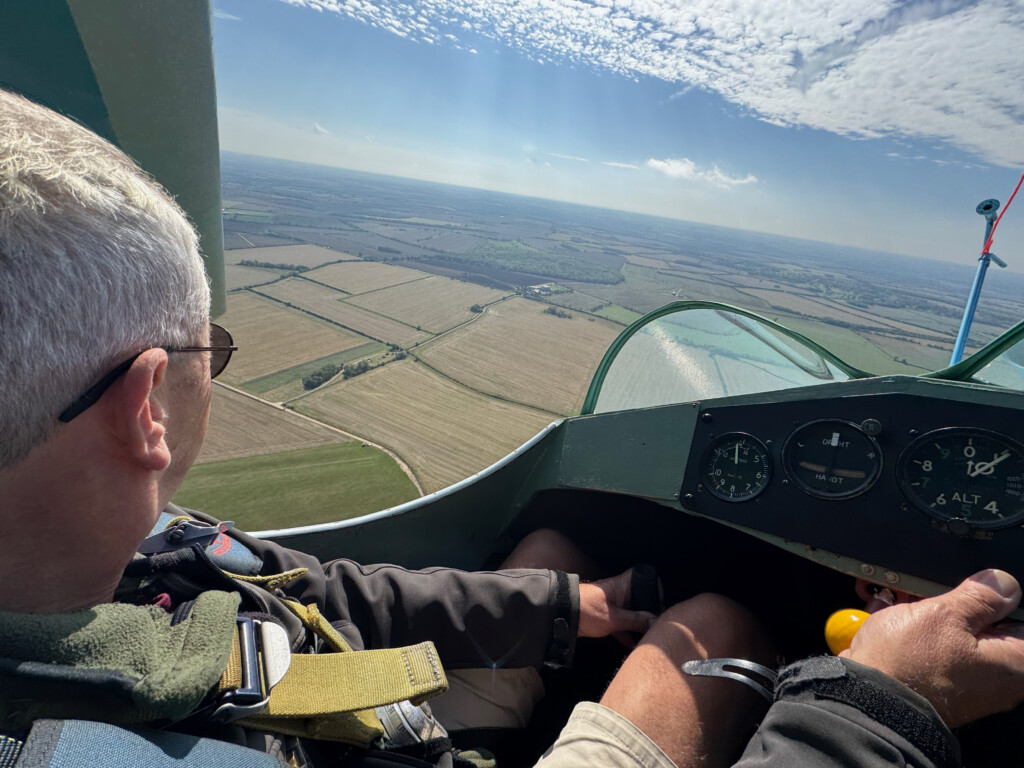
There’s no canopy! Obviously, in modern gliders you’re in a plexiglass canopy. In Bluebell, none of that.
This makes surprisingly little difference. The main effect is that I get briefly confused at the end of our pre-takeoff checklist, where the final item is checking the canopy.
The other interesting and surprising thing (to me) is that the wind blowing on your head isn’t necessarily from in front. I can’t really explain that. Oh well.
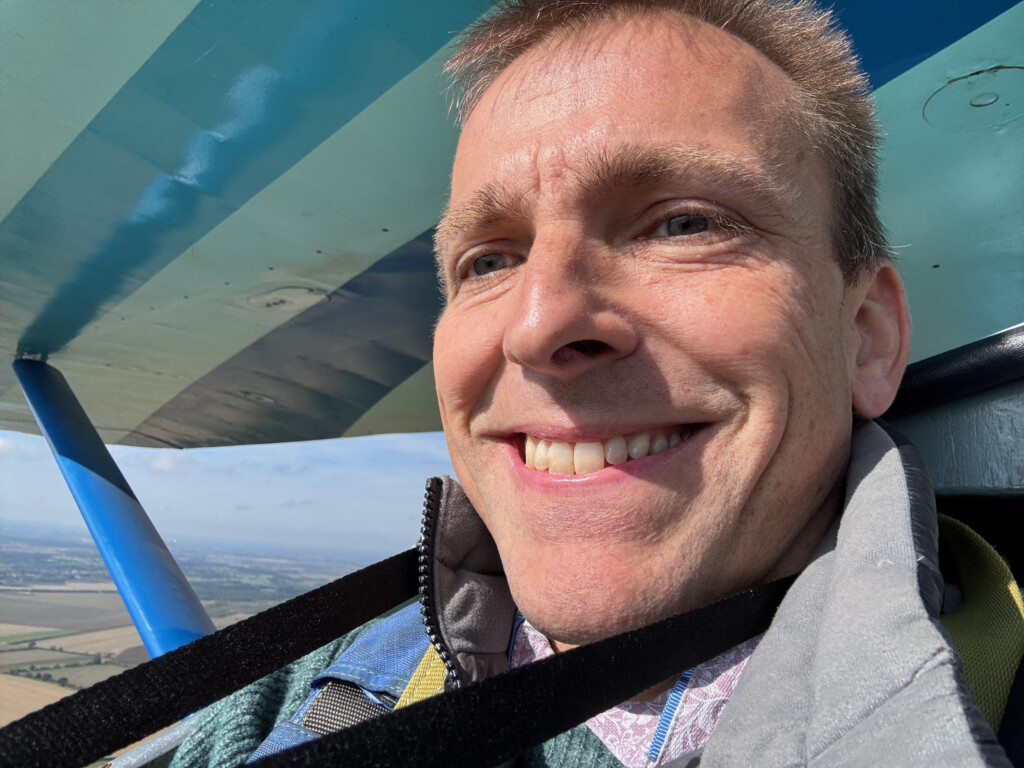
The yaw string is in the open air! (The “yaw string” on a glider is a literal piece of string or wool which shows whether the airflow over the glider is heading straight back, which is usually what you want, or off to one side. It shows whether you’re using the correct proportions of aileron and rudder.)
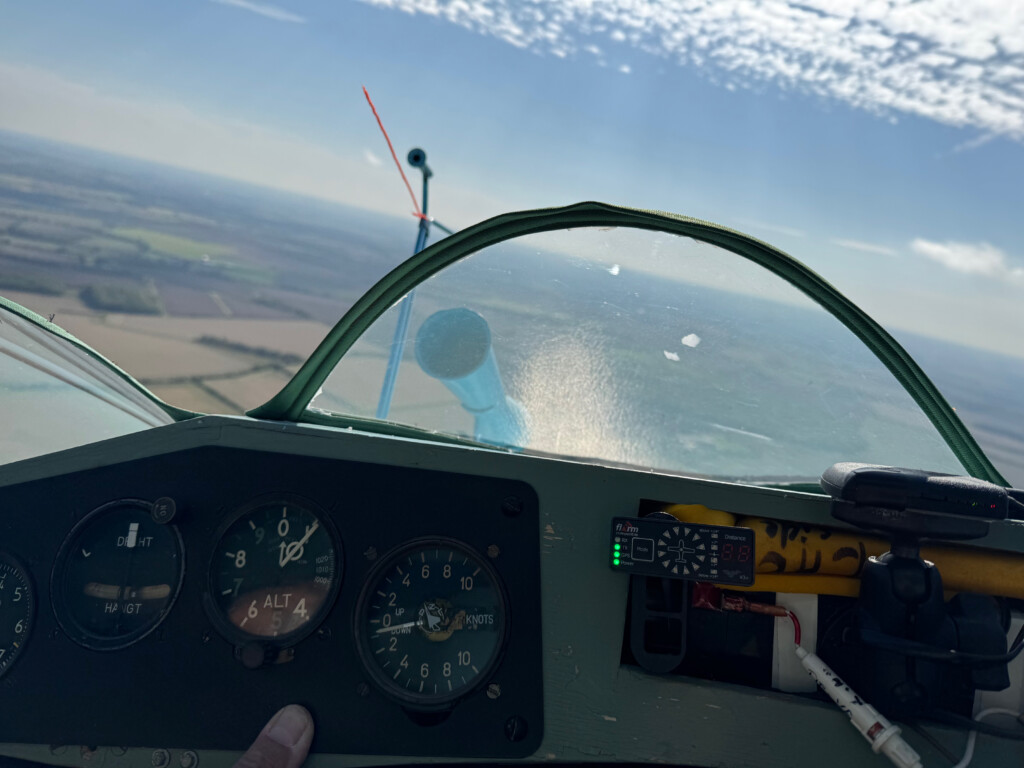
Overall though, my impression of Bluebell is that – she’s a glider! No massive changes to technique are required relative to a modern glider, just a few tweaks here and there. She’s lovely to fly and there were no nasty surprises. Strongly recommended for everyone!

